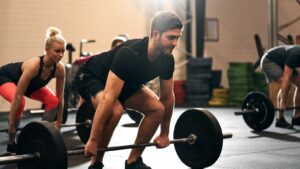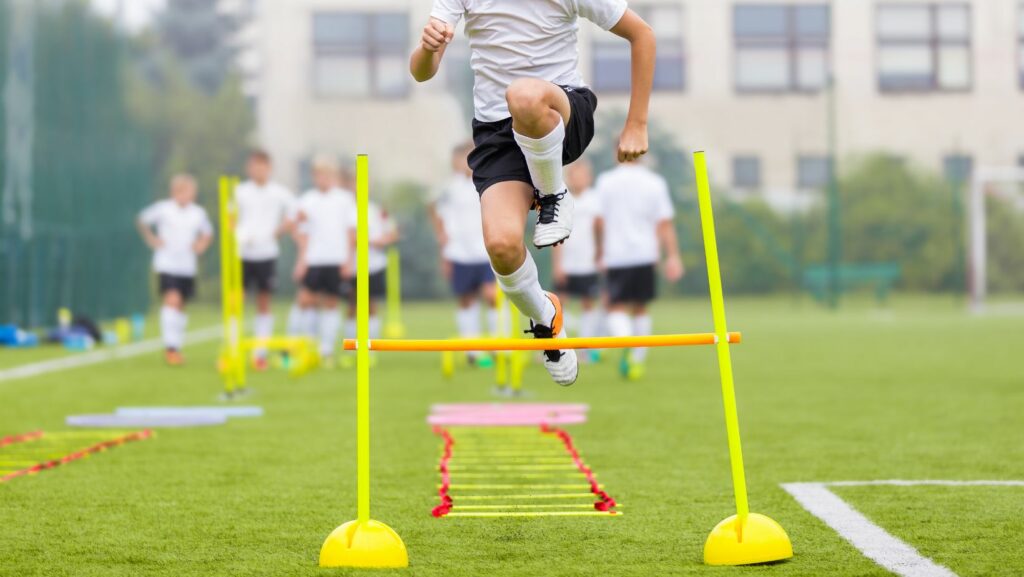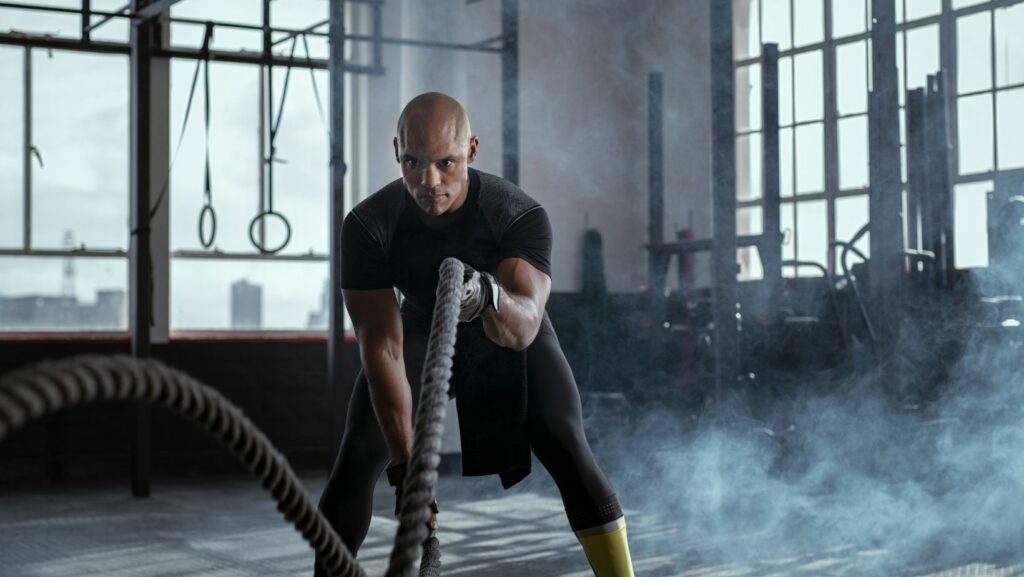Breaking a sweat shouldn’t mean breaking a bone. Whether you’re a fitness newbie or a seasoned gym rat, knowing how to exercise safely is key to maintaining an active lifestyle without unnecessary risks. This article is your go-to guide for understanding the fundamentals of exercise safety.
We’ll delve into the importance of proper form, the benefits of warming up and cooling down, and why rest days aren’t just for the lazy. We’ll also debunk some common myths about exercise safety that might be putting your well-being at risk.
So, lace up those sneakers and get ready to learn how to make your workouts work for you, not against you. Because when it comes to exercise, it’s not just about pushing your limits – it’s about knowing them too.
Exercise Safety Tips
 Mastering exercise safety protocols boosts workout effectiveness, drastically minimizes injury risk, and enhances overall well-being. Now let’s delve deeper into two key components – completing a proper warm-up and understanding one’s physical limits.
Mastering exercise safety protocols boosts workout effectiveness, drastically minimizes injury risk, and enhances overall well-being. Now let’s delve deeper into two key components – completing a proper warm-up and understanding one’s physical limits.
Initiating every exercise routine with a proper warm-up holds immense importance. An ample warm-up, containing light cardio and stretching, increases body temperature. This physical uptick offers numerous advantages.
For instance, enhanced muscle flexibility and a boosted heart rate provide optimal conditions for workout efficiency. Additionally, research asserts that warmed up muscles remain less prone to sprains and strains. A table below highlights the difference between warmed up and non-warmed up muscles during exercise.Ultimately, a proper warm-up solidifies a workout foundation, preparing the body for the ensuing rigorous activities.
Analyzing one’s capacity before engaging in physical activities proves critical for successful workouts. Overexerting the body might result in adverse effects like injuries, exhaustion, and even burnout. Therefore, recognizing personal limits and exercising within those boundaries becomes vital.
Throughout their fitness journey, individuals must monitor their heart rate, level of fatigue, and discomfort levels during various exercises. Any abnormal spike in these indicators might signal excessive stress on the body. As an example, studies show that sustained high-intensity exercise can lead to rhabdomyolysis, a serious condition where muscle tissue breaks down rapidly.
Adjusting the intensity, duration, and frequency of workouts tailored to personal limitations allows for a safer and efficient exercise regimen. Acknowledging limits, therefore, safeguards health and promotes steady, sustainable progress.
Essential Equipment for Safe Exercise
 Corresponding to the emphasized importance of exercise safety tips, certain essential equipment augments safe practice. The following discussion revolves around two prime categories: appropriate footwear and protective gear. The importance of wearing suitable shoes cannot be overemphasized in ensuring a safe exercise regime. Irrespective of the form of exercise, be it running, weightlifting, or yoga, adequate footwear offers critical support. This aids in improving balance, preventing slip-related injuries, and preserving foot health.
Corresponding to the emphasized importance of exercise safety tips, certain essential equipment augments safe practice. The following discussion revolves around two prime categories: appropriate footwear and protective gear. The importance of wearing suitable shoes cannot be overemphasized in ensuring a safe exercise regime. Irrespective of the form of exercise, be it running, weightlifting, or yoga, adequate footwear offers critical support. This aids in improving balance, preventing slip-related injuries, and preserving foot health.
For instance, running shoes provide cushioning, aiding in shock absorption while landing. Their design lessens the risk of knee, hip, and back issues stemming from high-impact shoes. By contrast, weightlifting shoes offer more solid bases, bolstering stability during heavy lifts, reducing the risk of falls and incorrect postures. Additionally, for exercises like yoga, barefoot or using non-slip socks proves best for grip and equilibrium maintenance.
Protective Gear
Apart from suitable shoes, certain exercises call for specific protective gear, inherently contributing to safe workouts. This category includes helmets, knee pads, gloves, and wrist guards, among others. For example, cycling and skateboarding necessitate helmets to protect the head from potential trauma. Cycling gloves prevent hand numbness during long rides, offering additional grip. Also, elbow and knee pads prevent severe bruises or injuries during falls.
Environmental Considerations for Outdoor Exercise
 Engaging in outdoor exercise demands not just proper gear and techniques but also an understanding of the environment. Operating in varying weather conditions and terrains requires keen observation and planning.
Engaging in outdoor exercise demands not just proper gear and techniques but also an understanding of the environment. Operating in varying weather conditions and terrains requires keen observation and planning.
Keeping an eye on the weather is a fundamental part of exercising outdoors. Weather conditions exert crucial influences on a person’s exercise safety. For instance, hotter conditions necessitate frequent hydration and lighter clothing. In contrast, colder weather demands layered clothing, which could be adjusted as the body heats up during exercise. Observing the weather outlook helps individuals to dress appropriately, maintain hydration and manage potential challenges such as slippery surfaces when it rains.




